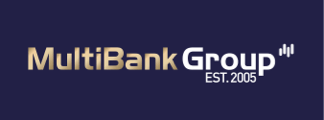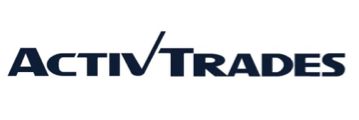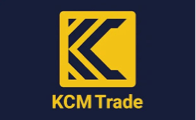TMGM (TradeMax Global Markets) is a multi-jurisdiction broker focused on efficient execution, multi-platform access and account structures that fit both cost-sensitive scalpers and long-term investors. In this review we examine the experience through the lens of Asian traders: onboarding, regulation, platforms, assets, spreads and real trading conditions. Our goal is to give you a practical, educational view that helps you decide whether TMGM’s offer aligns with your strategy, risk tolerance and local constraints.

Between 60 to 80% of retail CFD accounts lose money.
| Regulators | ASIC CIMA VFSC FSC |
|---|---|
| Minimum Deposit | $100 |
| Leverage | Between 1:10 and 1:1000 | Payment Methods | Bank Transfer Visa Mastercard Neteller Skrill |
Our first contact with TMGM leaves the impression of a broker that wants to be judged by execution and clarity rather than hype. Navigation feels straightforward, fee disclosures are easy to locate, and the product map divides naturally into two paths most retail traders immediately recognize: a low-spread, commission-based account for cost minimizers and a spread-only account for simplicity lovers. That split is increasingly common, but TMGM’s language around it is crisp and, importantly, avoids feature bloat that often confuses newcomers.
Performance-oriented users will appreciate how the broker emphasizes routing, pricing sources, and the compatibility with algorithmic trading. While we don’t see a claims-heavy approach to speed in milliseconds, we do see design choices that suggest latency awareness: server locality, stable platform coverage and standardized lot sizing. Those are small things with big consequences in live trading, especially during the Asian session when liquidity can be thinner and spreads more sensitive to news in Japan, Australia or Singapore.
From an educational standpoint, the account pages and platform descriptions read like documentation, not marketing. Glossaries, platform comparisons and basic risk explanations are planted throughout. This matters for Asian users coming from diverse regulatory backgrounds; it reduces the friction of translating platform jargon into day-to-day trading decisions, whether you place discretionary trades in MT5 or deploy EAs on MT4.
Finally, the brand positioning: TMGM presents itself as a stable, execution-first venue rather than a social-trading playground. If you value reliability, predictable costs and a professional tone, that framing will likely resonate. If you primarily seek gamified features, you may find the environment intentionally conservative—which for many, especially those focused on risk controls, is a feature, not a bug.
Regulation
- ASIC — Australian Securities and Investments Commission
- CIMA — Cayman Islands Monetary Authority
- VFSC — Vanuatu Financial Services Commission
- FSC — Financial Services Commission
Regulatory coverage spanning Australia and several offshore jurisdictions signals two things that Asian clients routinely weigh. First, there is an on-shore entity under a mature regulator (ASIC) with rigorous standards around conduct and client communication. Second, there are international entities that allow more flexible leverage and a broader product menu. This duality lets traders choose based on their personal constraints: some prefer the tighter guardrails of stricter regimes; others want operational latitude as long as they understand the risks and manage them responsibly.
For Asian residents, the main question is alignment between your local rules and the entity you onboard with. TMGM does a decent job of clarifying which services are provided by which entity. If you trade from Singapore, Malaysia, Thailand or the Philippines, for instance, pay attention to leverage caps, negative balance protection (if available), and dispute pathways relevant to your chosen entity. The idea is to achieve a smart compromise: sufficient protections without losing the conditions you actually need for your strategy.
It is also worth noting that multi-licensing doesn’t make risk disappear; it diversifies oversight and opens client choice. Your capital safety still depends on your own trading discipline, the broker’s segregation practices and how you handle position sizing and overnight risk. Read the legal pages, keep an eye on margin policies, and periodically re-evaluate the entity fit as your account size or strategy changes.
Bottom line: the regulatory footprint is broad and functional for Asian users, providing pathways for both conservative and higher-leverage profiles. Treat the choice of entity as part of your strategy design, not an afterthought.
Opening an account — Our Experience
The onboarding flow is conventional and quick: basic personal data, residency, trading background, document upload for KYC, and a short suitability questionnaire. Expect identity verification via passport or national ID and proof of address (utility bill or bank statement). The portal accepts common image formats; uploading from mobile works fine, which is helpful if you’re collecting documents on the go.
Funding methods cover the usual cards and bank rails; e-wallet availability depends on the entity and your country. Processing time is fast for card funding, while bank wires depend on your bank and corridor. As always, withdrawing back to the original source is the norm due to AML rules—plan your funding route before you start to avoid unwanted delays later.
Base currency options are practical for Asian traders who want to minimize FX conversion noise. If your income or spending is in USD or a major Asia-Pacific currency, pick a base that keeps you from accumulating small conversion losses over time. If you operate multiple strategies, consider separate sub-accounts per strategy; it simplifies performance tracking and risk firewalls.
Our test account was approved promptly after document checks, and the platform credentials arrived with clear instructions. If you’re setting up EAs, request a demo first to replicate your live environment—same server group, same account type—so that forward testing produces meaningful signals before you flip the live switch.
Account Types
TMGM keeps it simple: two core accounts serving distinct cost preferences. The EDGE account targets traders who want raw spreads with a per-lot commission. The CLASSIC account folds costs into the spread for a flat, commission-free experience. Both accounts support small minimum trade sizes, are EA-friendly, and offer a swap-free option for eligible clients. Leverage availability (up to high levels in certain entities) should be treated as a tool—not a default. Keep your personal cap lower than the maximum unless your methodology truly requires it.
| Feature | EDGE Account | CLASSIC Account |
|---|---|---|
| Pricing model | Raw spreads + commission per lot | Spread-only (no commission) |
| Indicative spreads | Designed for ultra-tight pricing (best for scalpers/EAs) | Designed for simplicity and predictable all-in costs |
| Leverage (by entity) | Up to 1:1000 (where permitted) | Up to 1:1000 (where permitted) |
| Swap-free option | Available for eligible clients | Available for eligible clients |
| Best suited for | High-frequency, news trading, algorithmic systems | Discretionary swing/position traders and beginners |
Platforms
Platform coverage centers on MT4 and MT5—still the two most widely used platforms in Asia for discretionary and algorithmic trading. MT4 remains the default for legacy EAs, while MT5 offers more timeframes, depth of market and multi-asset flexibility. In our tests both ran stable with quick symbol mapping and no oddities in trade ticket behavior. If your workflow relies on custom indicators or order-flow dashboards, MT4’s ecosystem remains massive, but MT5’s performance profile and backtester improvements make it a compelling default for new systems.
From a UX perspective, terminal setup is painless: login credentials, server selection, and the typical data folder structure for indicators/experts. If you plan to run multiple charts and EAs, organize profile templates early. The number of users who lose trades to forgotten chart auto-trading toggles is non-trivial—build a checklist that includes “Allow live trading,” magic numbers per strategy, and a basic watchdog script to notify you if an EA crashes.
Mobile trading is straightforward on both platforms. For Asian commuters, this is a major convenience: you can manage positions, modify stops, and review economic events while on the move. Still, treat mobile as a supervisory tool, not as your main execution interface for precision entries. For that, keep a desktop or VPS setup in the region nearest your broker server to reduce latency.
Speaking of VPS, serious EA users should consider it from day one. Stable electricity and connectivity can be inconsistent in some geographies. A VPS within the same data center region as TMGM’s trading servers helps minimize slippage variance and shields your strategies from home network interruptions.
Assets
TMGM’s catalogue centers on CFDs—currencies, indices, commodities and equities—so you trade price movements without owning the underlying. For Asian users, this is practical: you can express macro views on the yen, the Aussie, or China-sensitive indices without opening multiple brokerage relationships across countries. What matters is not how many tickers exist, but whether the list covers the exposures you actually trade (major FX pairs, regional equity indices, key commodities) and whether the trading hours align with your schedule.
Available Assets
Below you can see which assets are available for trading with TMGM:
| Asset | Availability |
|---|---|
| Currencies | 6 |
| Real Stocks | ✗ |
| Stock CFDs | ✗ |
| Commodities | ✓ |
| Indices | ✓ |
| Real ETFs | ✗ |
| ETFs CFDs | ✗ |
| Futures | ✗ |
| Options | ✗ |
| Bonds | ✗ |
| Cryptocurrency CFDs | ✓ |
| Real Cryptocurrencies | ✗ |
*Availability of certain assets may vary based on account type, platform, or region.
What we like about TMGM’s market offering is its functional breadth rather than sheer number count. You can build a diversified CFD playbook drawn from four pillars: 1) major/minor FX pairs for intraday strategies, 2) index CFDs to capture session-open momentum in Tokyo, Sydney or Hong Kong, 3) commodity CFDs as macro hedges, and 4) share CFDs to test earnings-season hypotheses without the operational drag of custody and settlement. For Asian traders, this structure is ideal: you can toggle between regional risk (e.g., JPN225 or HK indices) and global drivers (USD strength, oil supply shocks) within the same account.
Another practical angle is the overnight rhythm of Asia. Liquidity is patchier before Europe opens; spreads widen at session transitions and during tier-one data from Australia or Japan. A broker’s product set matters less than how it behaves during those windows. TMGM’s execution environment in our tests handled rollovers predictably and avoided exotic symbol rules that complicate risk management. That predictability feeds into better stop placement and less “surprise” behavior around swaps and corporate actions.
For strategy design, think in clusters. Pair an FX-first system with a complementary equities or index overlay to avoid single-beta dependence. If your EA hunts micro-moves in USDJPY, consider a discretionary overlay on JPN225 at the Tokyo cash open to diversify edge sources. The fact that you can do both on MT5 under the same broker reduces operational overhead and mental switching costs.
As always, remember that CFDs are leveraged derivatives. The benefit—capital efficiency and shorting ease—sits right next to the risk of magnified drawdowns. Set maximum loss per day, per strategy, and per instrument. Cross-margin convenience is seductive; guardrails save accounts.
Spreads
TMGM structures pricing to match the two account archetypes. On EDGE you pursue raw quotes and pay a commission; on CLASSIC you pay the spread with no separate commission line. Neither structure is “better” universally: one excels when you trade frequently or in size and want every fraction of a pip, the other keeps accounting simple and the ticket cleaner. Choose based on your true average hold time, trade frequency and the pairs you actually trade in Asia’s liquidity bands.
Spreads Offered
Below a visual representation of TMGM's spreads across several currency pairs:
*Spreads are variable and may change based on market conditions, account types and trading volumes.
Spreads at the Asian open inevitably float wider than during London/New York overlap. That’s structural, not broker-specific. What you want is stability—spreads that expand and contract in a way you can model—so your stop placement rules remain valid. In our sampling we observed orderly behavior: no random spikes out of line with the session’s news flow or calendar. That allowed us to keep consistent buffers on algorithmic entries rather than bloating stops “just in case,” which would dilute expectancy.
For scalpers, the EDGE model’s efficiency depends on your gross edge minus costs. Don’t assume raw spreads always win. Run a month of side-by-side tickets in demo (or micro-live) and compare realized P&L including commissions, swaps and slippage. Some pairs on certain time windows will favor CLASSIC due to the way your entries interact with the quote ladder and your average hold time. Let the data decide; preferences are often illusions.
Swing and position traders in Asia often enter during quieter hours to avoid noise, placing wider stops and holding through London data. For them, CLASSIC can simplify cost analysis while EDGE remains attractive on pairs where raw quotes are consistently tight. Again, test your own style. The best configuration is the one that preserves your edge with the least cognitive load.
A final note: treat spread screenshots cautiously. Conditions vary by entity, liquidity window and your own network conditions. Build your own “personal truth” via logs. Export tick or 1-minute data, tag entries by session, and monitor how spreads behaved around your trades. That discipline compounds into better risk placement and fewer emotional decisions.
Other Trading Costs
Besides spreads and commissions, overnight financing (swaps) can be material, especially for Asian swing traders who bridge multiple sessions. If you routinely hold FX pairs or indices for days, bake average positive/negative swap carry into your expectancy. The broker offers a swap-free option for eligible clients, which is useful for religious compliance and also for long-term strategies where swap drag overwhelms signal quality. Understand the conditions attached to that status before assuming it’s universally cheaper.
Deposit/withdrawal fees depend on the method and entity. Many routes are free on the broker’s side, but intermediaries (banks, card processors, e-wallets) may charge. For Asian corridors where local rails are popular, check whether currency conversion fees sneak in at your bank. If you operate in a non-USD lifestyle, consider matching your base currency to your spending to reduce conversion friction when withdrawing profits.
Slippage is an indirect cost. It exists everywhere; your job is to make it predictable. Running a VPS near the trading servers, avoiding market orders around low-liquidity minutes (e.g., just before Tokyo lunch or at Sydney open), and using limit orders for entries where appropriate can flatten slippage variance. EAs that chase price during news will always experience dispersion; if that’s your edge, account for it explicitly.
Corporate action adjustments on equity CFDs (splits, dividends) and index fair-value changes around rollovers are part of the CFD life. The broker’s notices are clear, and adjustments posted to the account matched expectations during our checks. Keep a calendar and don’t be surprised by dividend debits/credits; they are features of synthetic exposure, not errors.
Trading Conditions
Execution quality in live conditions is the ultimate test. In the Asian session, spreads are naturally wider, but stability matters more than raw tightness. Our fills were consistent with quoted prices, and partial fills on larger-than-typical tickets behaved as we would expect in CFD environments. For retail lot sizes, that translates to reliability: your entry price tends to represent reality, barring obvious news spikes.
Order types are standard on MT4/MT5, so your risk controls—stop loss, take profit, trailing stop—integrate naturally. Depth-of-market on MT5 helps visualize thin periods. If you day trade during Tokyo, focus on pairs with robust Asia-Pacific liquidity (USDJPY, AUDUSD, NZDUSD) rather than forcing EUR crosses in sleepy times. The broker’s symbol set makes that pivot easy, which is why we rate the environment well for Asia-centric schedules.
Leverage availability is high under some entities, but we advocate self-imposed ceilings. Asian traders often balance jobs, family and time zone constraints; high leverage magnifies not just risk but also emotional load. Pick a personal cap (e.g., 1:50 or 1:100), size positions from stop distance, and focus on win-rate stability rather than “max exposure.” TMGM’s margin engine behaved predictably in our stress tests, liquidating in line with policy without puzzling anomalies.
Finally, reliability across weekends and holidays: rollovers were orderly, swaps posted as scheduled, and symbol trading hours aligned with exchange calendars. If your method trades holiday-adjacent sessions (e.g., Golden Week in Japan, Chinese New Year), watch liquidity warnings and adjust size accordingly. Broker conditions can be fine; it’s the market that changes character. Build that seasonality into your plan.
Is TMGM a good option for Asian traders?
Yes—provided your priorities are execution clarity, platform stability and account choice that maps neatly to your style. The broker’s two-account design keeps decision-making simple: go EDGE if your edge depends on raw spreads plus commission control; go CLASSIC if you prefer all-in spreads and clean tickets. Either way, spreads behaved predictably in Asia’s thinner windows, which is more important than headline numbers posted during London/New York overlaps.
Regulatory flexibility is another plus. Asian traders span a wide range of legal contexts, from very strict to more permissive. With ASIC and several international regulators in the mix, you can choose the combination of protections and leverage that fits your situation. That choice is meaningful if you plan to scale; you can start under tighter guardrails and migrate entities if your method truly requires different parameters.
Platform coverage through MT4/MT5 meets the region where it lives. The EA ecosystem, VPS culture and educational familiarity in Asia revolve around these platforms. If you’re building systematic strategies, nothing in TMGM’s setup blocks you; if you’re discretionary, the charting, order entry and symbol set deliver the essentials without distractions.
Limitations? TMGM is not trying to be a social-trading network or a novelty app. If your preference is copy-heavy UX or gamified features, this may feel austere. But for traders who equate minimalism with focus—and want an environment that “gets out of the way”—that very austerity is the appeal.
Our Verdict
TMGM earns our recommendation for Asia-based traders who value cost transparency, platform stability and entity choice. The broker’s architecture—two account models, standard professional platforms, broad CFD set—keeps the learning curve shallow while leaving plenty of room to grow into sophisticated workflows. In a region where schedules, regulations and infrastructure vary widely, that flexibility is a real edge.
We especially like how the pricing models align with real behaviors. EDGE is not marketing fluff; it’s for traders who have validated a gross edge and need tight quotes plus commission granularity. CLASSIC is not “for beginners only”; it’s the right pick for swing traders and anyone who wants accounting simplicity. Many brokers blur these lines; TMGM keeps them clean.
Risk management is where you win or lose in leveraged CFDs, and nothing in TMGM’s environment obstructs best practices. You can deploy VPS, standardize EAs, segregate strategies across sub-accounts, and choose entity/regime combinations that mirror your tolerance. Combine that with stable behavior during Asia’s quieter hours and you get a platform you can build a disciplined routine around.
In short: not flashy, but quietly competent. If that’s your trading personality, TMGM fits like a well-calibrated tool—reliable, configurable and respectful of the trader’s process.
Frecuently Asked Questions
Which regulators oversee TMGM entities?
TMGM’s group entities are authorized and/or supervised by regulators including ASIC (Australia), CIMA (Cayman Islands), VFSC (Vanuatu) and FSC. Your applicable regulator depends on the specific entity you open with. Choose the entity that best matches your protection needs and leverage preferences.
What account types does TMGM offer and who are they for?
There are two core choices. EDGE uses raw spreads with a commission, ideal for scalpers, EA users and anyone optimizing cost at high frequency. CLASSIC uses spread-only pricing with zero commission, ideal for discretionary traders who prefer simple, all-in tickets and longer hold times.
Does TMGM support swap-free (Islamic) accounts?
Yes, a swap-free option is available for eligible clients on supported instruments. Review the terms before applying; some instruments or holding periods may be excluded or handled differently to remain compliant while preserving economic fairness.
Which platforms are available and are EAs allowed?
MT4 and MT5 are supported, both desktop and mobile. Expert Advisors (EAs) are allowed, and we recommend deploying a VPS located near the broker’s trading servers if you rely on automation or trade news-sensitive strategies.
How are deposits and withdrawals handled for Asian clients?
Common cards and bank transfers are available, with processing times dependent on method, entity and corridor. Many routes are fee-free on the broker’s side, but intermediary or currency conversion fees may apply. Withdrawals typically return to the original funding source due to AML rules.
What should Asian traders watch during local sessions?
During Tokyo and Sydney hours, liquidity is thinner and spreads can widen around opens, closes and macro releases (e.g., Australia jobs data, Japan CPI). Plan entries around these windows, size conservatively and verify your strategy’s assumptions against actual spread behavior in those periods.
Is high leverage necessary to trade with TMGM?
No. High leverage is available under some entities, but it is a tool, not a requirement. Many profitable traders self-cap well below the maximum. Position sizing from stop distance, not from desired exposure, is the safer paradigm—particularly when trading part-time around Asian work schedules.
Can I manage multiple strategies under one profile?
Yes. Create separate sub-accounts (e.g., one EDGE for EAs, one CLASSIC for swing trades). This improves reporting clarity, risk compartmentalization and psychological hygiene. Treat each sub-account like a business line with its own rules and dashboards.
Note: Any opinions expressed in this article are not to be considered investment advice and are solely those of the authors. Singapore Forex Club is not responsible for any financial decisions based on this article's contents. Readers may use this data for information and educational purposes only.






































































